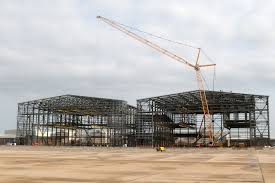Deal With COVID-19 And Ongoing Contractor Projects

Deal With COVID-19 And Ongoing Contractor Projects
In reaction to COVID-19, state as well as city governments are issuing orders putting on hold “non-essential” company. At this moment in the COVID-19 pandemic, building job is commonly consisted of on the list of vital company, particularly if it associates with energies, telecoms, transportation, as well as healthcare infrastructure. Firms may want to examine the state and also regional orders in place in each jurisdiction where they are currently running to determine if a building project may continue.
Dealing With Ongoing Construction Projects During Pandemics
Interact with the proprietor concerning COVID-19.
General specialists may intend to quickly examine their contracts, particularly the areas concerning force majeure and making claims for unanticipated delay. Follow all notice requirements immediately, by giving the owner with all available details on (a) the extent to which the job is being affected by COVID-19; (b) the steps the general professional is requiring to proceed with the work in a secure way, or, if necessary, to briefly suspend job; as well as (c) the ways in which COVID-19 is affecting or may influence the project cost as well as timetable.
This is no warranty that the general specialist won’t need to birth a minimum of a few of the COVID-19-caused boosts to the project costs as well as influences to the timetable, however complying with notice needs may at the very least protect against any future insurance claims of lack-of-notice. If the proprietor makes a decision to put on hold work, at the same time, without delay follow all contractual needs relating to work suspension. It is likewise useful to alert the owner of extra precautions in place in action to the COVID-19.
Develop and carry out an infectious illness readiness and also reaction plan.
Consider customizing the strategy to fulfill service requirements, but usually likewise take into consideration controls required to deal with risks of COVID-19 direct exposure at the worksite, including recognition of: (a) possible locations of increased exposure threat (e.g., typical gathering places with typical surface areas and also areas where employees must operate in limited quarters); (b) nonoccupational threat variables at home and in neighborhood setups; and also (c) employees’ private threat variables (e.g., older age; chronic medical conditions, including immunocompromising conditions; and pregnancy). General service providers may likewise want to create the strategy so that it is educational as well as offers clear assistance to employees on how to acquire more info as well as record questions or issues.
Connect with subcontractors regarding COVID-19.
Before speaking to subcontractors, examine the subcontractor contracts and identify material terms, such as arrangements relating to health and safety; compliance with government, state, as well as local legislations; as well as any type of job conclusion due dates. In communications with subcontractors, confirm the general professional’s conformity with COVID-19 assistance released by the U.S. Centers for Illness Control and also Avoidance (CDC), consisting of that the general contractor actively motivates ill workers to stay home, which subcontractors additionally adhere to support from the Division of Labor’s Occupational Safety and security and also Wellness Management and Wage and also Hr Division. Take into consideration supplying subcontractors an opportunity to report to the basic service provider’s presumed COVID-19 exposure at the work website.
Modify work rules to promote social distancing.
This may include restricting how many subcontractors may work on a specific task each time, as well as limiting rotational working hours. It might also consist of ceasing job-provided lunches, shared pens for jobsite sign-ins, and also in-person conferences in tight spaces, such as work trailers. Consider holding tool kit and other security conferences in an outside room with all workers standing at least 6 feet apart. Take into consideration restricting worksite accessibility just to individuals who are necessary for the task.
Rise availability of handwashing terminals and also disinfectant wipes.
In addition to boosting the terminals as well as supplies, comply with the CDC’s referrals to upload CDC health promotion products pertaining to COVID-19. The CDC also suggests cleaning down with anti-bacterial wipes high-contact locations and also shared tools, as well as motivating respiratory etiquette, including covering coughings and sneezes.
Area and respond to symptoms.
General specialists may wish to educate task supervisors or managers and various other workers to find signs and symptoms of feasible infection in coworkers or subcontractors’ staff members. Think about applying a “see something, state something” attitude. In feedback to identified symptoms, the general professional may want to omit the symptomatic worker, connect the exemption to the subcontractor (if appropriate), and call for medical clearance prior to enabling the staff member to return to the task.
Give education and learning on the Households First Coronavirus Reaction Act (FFCRA).
Reliable April 1, 2020, the FFCRA will certainly go into effect, altering the lawful demands connected to fringe benefit and also leaves of absence. In addition to figuring out whether the general contractor undergoes the FFCRA, the general service provider might want to take into consideration notifying its subcontractors of this brand-new employment legislation responsibility.

